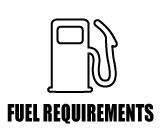Supported Vehicles:
- USDM 2017-2020 F-150 Raptor SuperCab / SuperCrew
- USDM 2019-2020 F-150 Limited HO
| All Raptor | F-150 Limited HO |
|---|---|
Map Revision:
| Map Revision:
|
Required Accessport AP-FOR-005 Firmware:
- V3: 1.7.3.0-18789 or greater
Ford has issued multiple TSBs related to the operation of the cam phasers on the 3.5 EcoBoost engine. In addition to replacing parts, the TSB also calls for an update to be applied to the ECU that makes changes to the cam phaser control strategy and calibration. We offer support for both the new and old strategies - older strategies are labelled "(Recalled)" and newer strategies are labelled "Post-Recall 1" or "PR1".
When installing your Accessport, if you notice that the vehicle identifies as a "(Recalled)" strategy, you can visit your Ford dealership to update the ECU and then reinstall the Accessport.
COBB Custom ECU Features
- COBB Custom Features: Disabling Auto Start/Stop on Ford Models
- COBB Custom Features: Fuel Pump Activation via Accessport on Ford F-150 / Raptor
- COBB Custom Features: Dynamic Pedal Control for Ford Trucks
- COBB Custom Features: Valet Mode for Ford Trucks
Towing
COBB's staged performance maps are designed for performance driving and have not been optimized for use when towing. COBB recommends flashing the Performance Tow or Stage 0 "Stock Style" ECU calibrations when towing. Always use the vehicle's Tow drive mode when towing.
Map Availability:
Stage1
93 Octane / 98 RON
91 Octane / 95 RON
Stage2
93 Octane / 98 RON
91 Octane / 95 RON
Performance Tow
93 Octane / 98 RON
91 Octane / 95 RON
Notes on Knock Octane Modifier (KOM):
- Knock Octane Modifier (KOM) is a learned variable that will change dependent mainly on knock corrections over time. KOM can dictate how much load, boost, ignition timing, etc... the truck will run. The lower the KOM the less the power output. Ideally this value should be at +1.0 but it can change depending on conditions other than knock.
- Knock Octane Modifier (KOM) will be limited to less than or equal to 0 while Engine Coolant Temperature is below 130*F (54.5*C) on COBB OTS maps. By 135*F (57*C), KOM will return to the retained learned value if it is greater than 0. It is common to see a KOM of 0 when the vehicle is warming up. Limiting Knock Octane Modifier during warm up is done to prevent unnecessary strain before the engine has reached a reasonable temperature.
- Knock Octane Modifier (KOM) will be limited to -1.0 while Engine Coolant Temperature is above 250*F (121*C) on COBB OTS maps. This is to prevent heavy load in the case the vehicle begins to overheat due to a mechanical failure.
- Knock Octane Modifier and Coolant Temperature are both parameters the Accessport can monitor.
Closing Warnings and Precautions:
- Use of inappropriate calibration/modification combinations will promote engine damage.
- Seek the help of a professional COBB Accesstuner Professional should your vehicle fall outside of OTS configurations.
- COBB OTS mapping is NOT designed to be used with upgraded aftermarket boost actuators or solenoids. Doing so may result in much higher than desired boost and potential engine damage. Seek the help of a COBB Accesstuner Professional should your vehicle fall outside of OTS configurations.
- Top Tier gasoline should be used where available. Use of lower quality fuels can result in catastrophic engine damage.
Raptor Revision History:
| Version # | Notes: |
|---|---|
| 203 | Hotfix for grill shutter code maps. |
| 202 | Fixes grill shutter codes from appearing when disabling them in vehicle when flashing Stage2 OTS maps. |
| 201 | Improved ECU+TCM Install/Uninstall UI. |
| 200 | Comprehensive evolution of original OTS; improved power/torque consistency over a wider range of operating conditions, improved drivability. Initial release of Performance Tow calibrations. |
| 105 | Original release calibration for 2020 Raptor; improved power at higher charge air temperatures on 2019 Stage 1 93 OCT map; Maps have been updated to eliminate unnecessary DTC suppression. |
| 104 | Revised boost control at high RPM for 2018 Raptor Stage 2 maps; all other maps unchanged and adjusted for version number parity |
| 103 | Original release calibration for 2019 Raptor Stage 1 maps; improved power demand pedal translation |
| 102 | Improvements made to boost control at higher elevations and part throttle power delivery |
| 101 | Original release calibration for Stage 2 maps; fixed bug related to Auto Stop/Start in Stage 1 maps |
| 100 | Original release calibration for Stage 1 maps. Adjusted ignition timing, torque modeling, torque targets, boost control (including overboost), camshaft phasing (VCT), and base programming logic. |
F-150 Limited HO Revision History:
| Version # | Notes: |
|---|---|
| 202 | Fixes grill shutter codes from appearing when disabling them in vehicle when flashing Stage2 OTS maps. |
| 201 | Improved ECU+TCM Install/Uninstall UI |
| 200 | Comprehensive evolution of original OTS; improved power/torque consistency over a wider range of operating conditions, improved drivability. Initial release of Performance Tow calibrations. |
| 101 | Addresses bug with AP user Adjustments not persisting after key cycles. |
| 100 | Initial Calibration. Adjusted ignition timing, torque modeling, torque targets, boost control (including overboost), camshaft phasing (VCT), and base programming logic. |


